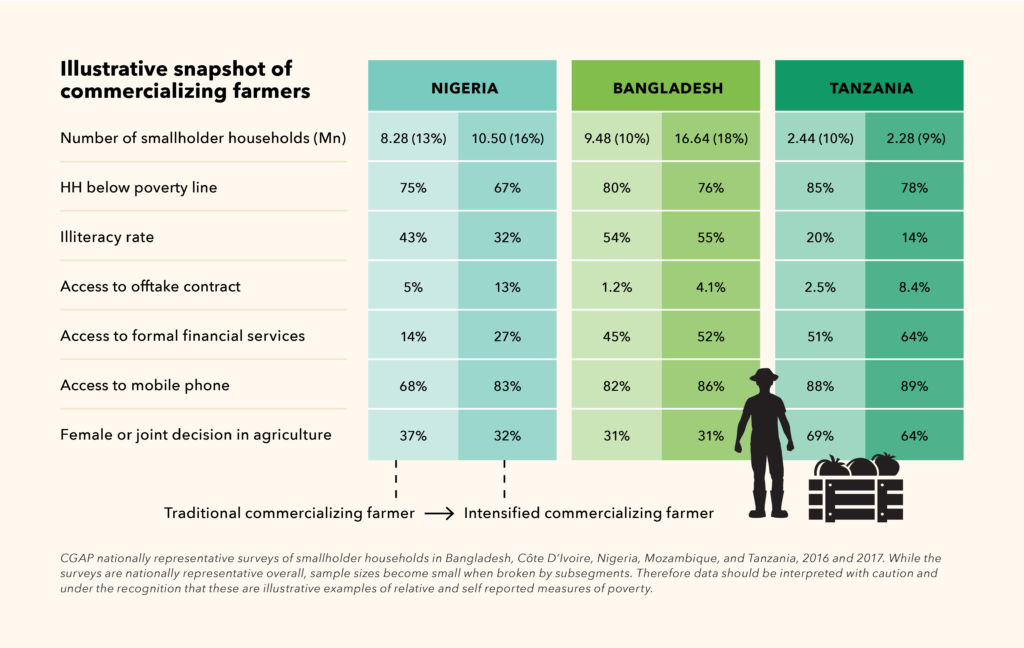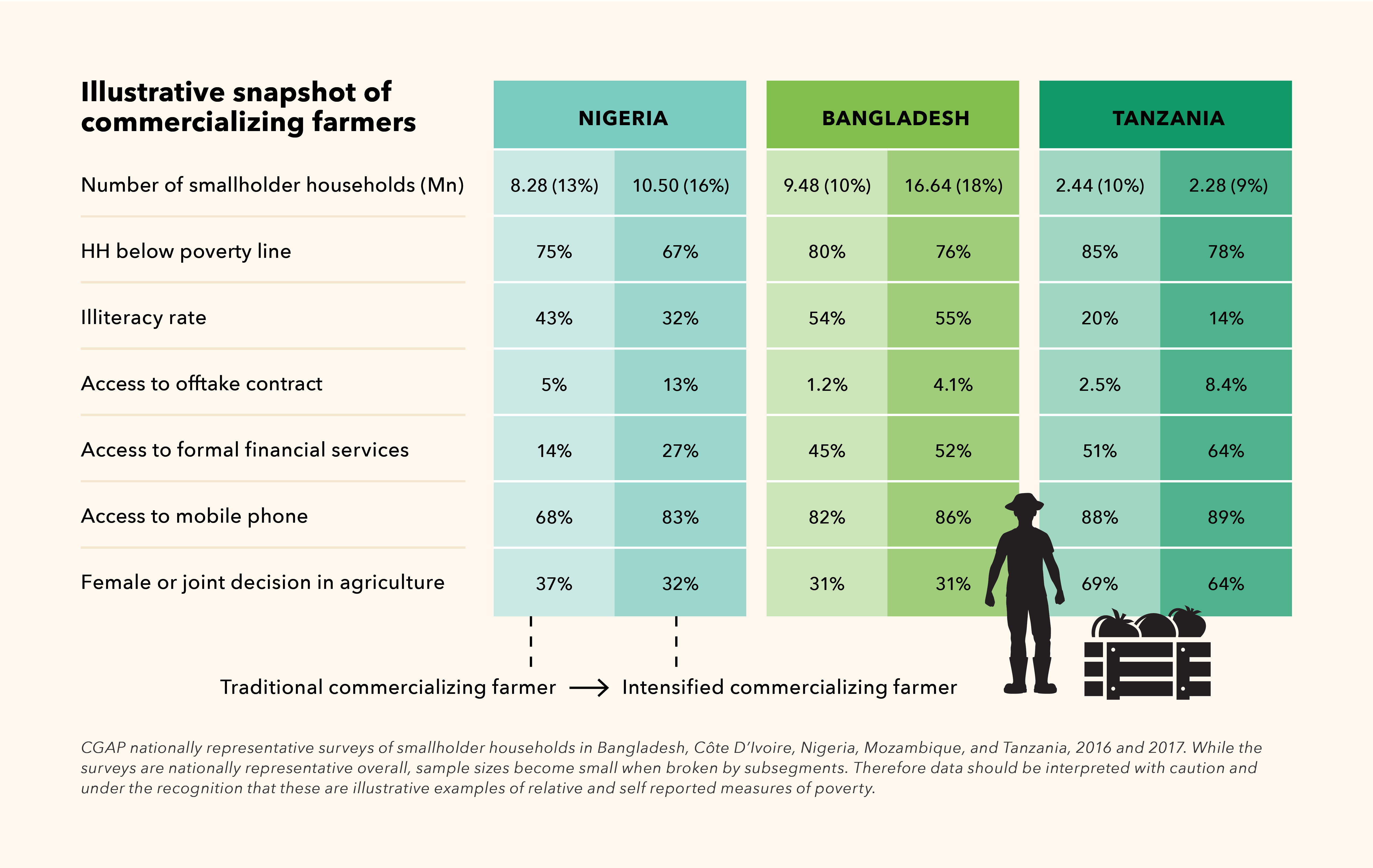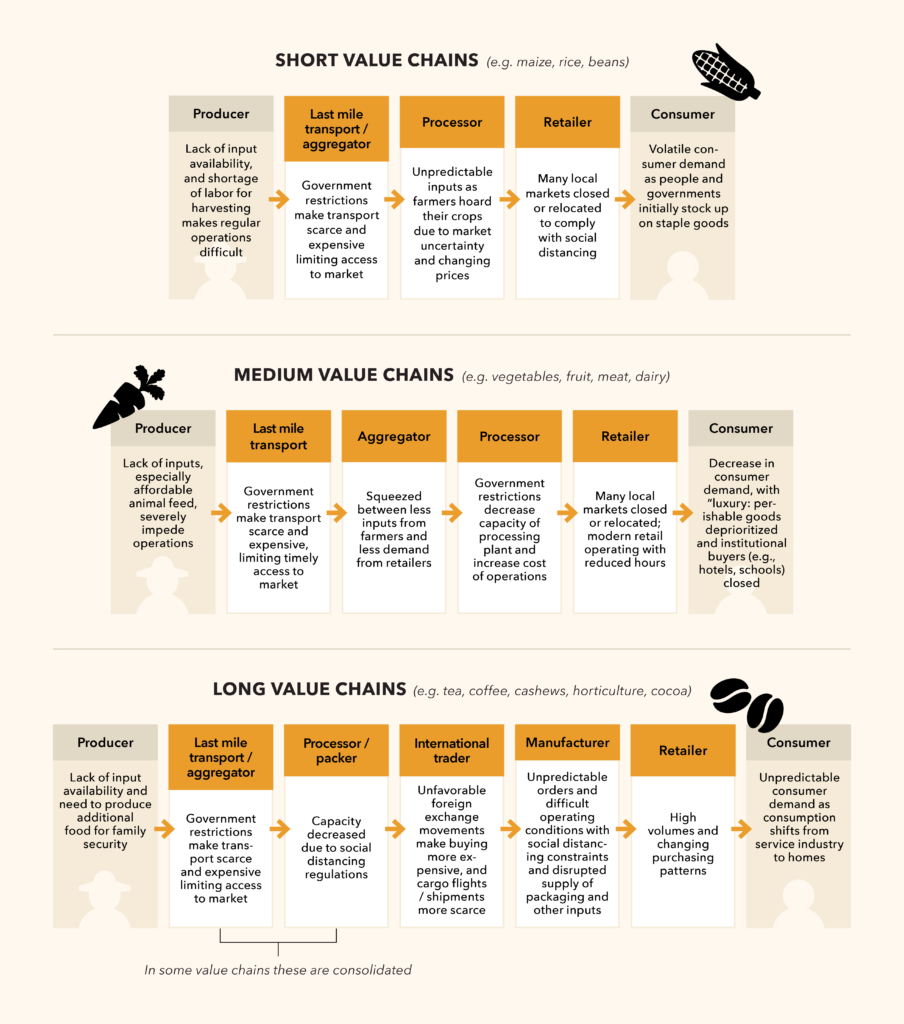Commercializing farmers are highly dependent on their surrounding ecosystems to continue to operate farming as their primary livelihood source. These ecosystems have proven highly vulnerable to the effects of COVID-19, differing in severity depending on the value chain.
Commercializing farmers work on a variety of value chains, from local staple foods, such as cassava and maize, to high-value export crops, such as cocoa and coffee. The level of dependence and contracts within those value chains, and how they are financed, create a number of potential vulnerabilities and disruptions from COVID-19.






